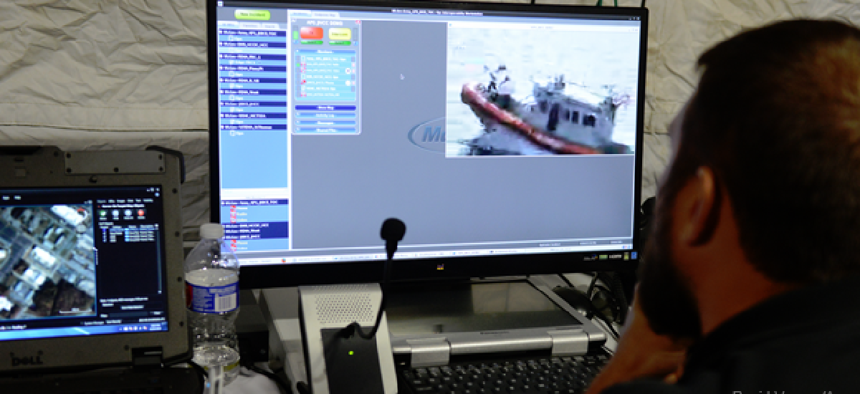Agencies test Multimedia Gateway for interoperable comm


Connecting state and local government leaders
The Multimedia Gateway is being tested as a quick fix for communications across government and first responder networks.
To address today’s physical and cyber threat landscape, officials have stressed the importance of information sharing – not just among government agencies, but also extending to public/private partnerships. However, when organizations are on different networks, sharing information in real time can become a real challenge.
The Department of Defense, Department of Homeland Security, and various National Guard, state police, first responders and partner-nation militaries “each developed its own unique network, which may or may not communicate well with the others,” said John Kahler, chief of the Joint On-demand Interoperability Network.
Now, however, that may be changing.
At this year’s 22nd annual Joint Users Interoperability Communications Exercise, each military branch and 11 partner nations tested the Multimedia Gateway (MMG), a bridging capability that facilitates cross-talk among existing networks.
This bridge technology was tested with the Federal Emergency Management Agency, for example, to validate that FEMA communications flowed smoothly across other agencies’ networks in real-time hostile environments in which “state and non-state actors were actively trying to hack into the system,” Kahler said. The Army shared its tactics with FEMA for “dealing with all the mischief,” he added.
Additional network capabilities include greater mobility and greater bandwidth. Users with smartphones, iPads, radios or laptops could be authenticated and log onto the secure network. Drone images from DHS, for example, could be shared with the National Guard, according to Bruce Oehler, a contractor for MMG. Hospitals and fire stations also are beginning to use MMG, as they are an integral part of the first responder network, Oehler said.
MMG’s uses extend beyond communication, Oehler added, explaining that DHS is monitoring its networks to protect against attacks by reviewing logs to detect anomalies and then isolating portions of the network to contain potential damage.




